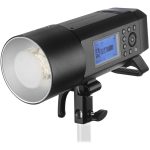Introduction
In the world of advertising, your headline is your first impression. It’s the hook that grabs attention, draws people in, and compels them to learn more about what you’re offering. Crafting a compelling headline isn’t just an art—it’s a science that can make or break your business success. So, how do you create advertising headlines that can make you rich? Let’s dive in and find out.
What Makes a Great Advertising Headline?
Clarity and Simplicity
A great headline is clear and simple. It conveys the message in a straightforward manner without any ambiguity. Readers should immediately understand what you’re offering and why it matters to them.
Emotional Impact
People make decisions based on emotions. A headline that tugs at the heartstrings or evokes a strong reaction is more likely to be remembered and acted upon. Whether it’s joy, fear, excitement, or curiosity, emotions play a crucial role in effective advertising.
Relevance to the Audience
Your headline must resonate with your target audience. It should address their needs, desires, and pain points. When your audience feels that the message is tailored specifically for them, they are more likely to engage.
The Psychology Behind Effective Headlines
Cognitive Biases and Attention
Human brains are wired to notice certain patterns and biases. Understanding these can help you craft headlines that stand out. For example, the “mere-exposure effect” suggests that people tend to prefer things they are familiar with. Using familiar phrases or popular trends can make your headlines more appealing.
The Role of Curiosity and Interest
A good headline piques curiosity. It makes the reader want to know more. Questions, intriguing statements, or hints at valuable information can drive clicks and engagement.
Using Urgency and Scarcity
Creating a sense of urgency or scarcity can prompt immediate action. Phrases like “limited time offer” or “only a few spots left” can make readers feel the need to act quickly.
Types of Advertising Headlines
How-To Headlines
People love learning how to solve their problems. “How to Lose Weight Fast” or “How to Save Money on Groceries” are examples of headlines that promise valuable information.
List Headlines
Lists are easy to read and digest. Headlines like “7 Tips for Better Sleep” or “10 Must-Have Travel Accessories” attract readers with the promise of concise, actionable advice.
Question Headlines
Asking a question can engage the reader by making them think. “Are You Making These SEO Mistakes?” or “What’s the Secret to Perfect Skin?” invite curiosity and interaction.
Command Headlines
Directly telling your audience what to do can be very effective. “Stop Wasting Money Now” or “Get Your Dream Job Today” are examples of command headlines that compel action.
Testimonial Headlines
Using a testimonial in your headline adds credibility. “Why This Diet Changed My Life” or “Customers Love Our New Product” leverage social proof to build trust.
Benefit-Driven Headlines
Highlighting the benefits your product or service offers can attract attention. “Save Time with Our New App” or “Double Your Productivity Today” focus on the positive outcomes for the user.
Crafting Your Own Powerful Headlines
Research and Understand Your Audience
Know who you are talking to. What are their interests, needs, and pain points? Tailor your headlines to address these aspects directly.
Use Strong, Action-Oriented Words
Words like “discover,” “boost,” “create,” and “enhance” inspire action. They make the reader feel empowered to make a change or take advantage of an opportunity.
Incorporate Numbers and Data
Numbers stand out in a sea of text. They also add credibility. “5 Easy Steps to Financial Freedom” or “Increase Your Sales by 30%” are examples of how data can enhance a headline.
Address the Pain Points and Offer Solutions
Identify the main problems your audience faces and offer solutions. Headlines like “Tired of Back Pain? Try Our New Therapy” directly address issues and provide hope for resolution.
Examples of Successful Advertising Headlines
Case Studies of Iconic Headlines
- “They Laughed When I Sat Down at the Piano… But When I Started to Play!” – This classic headline by John Caples highlights surprise and curiosity.
- “Got Milk?” – Simple, memorable, and evocative, this headline became a cultural phenomenon.
Analysis of What Made Them Successful
Both headlines play on emotions and curiosity. They are clear, impactful, and directly speak to the reader’s interests and experiences.
Common Mistakes to Avoid
Overcomplicating the Message
Keep it simple. A complicated headline can confuse and deter potential customers.
Making False Promises
Trust is crucial. Avoid making claims that you can’t back up. Authenticity wins customer loyalty.
Ignoring the Target Audience
A headline that doesn’t resonate with your intended audience is ineffective. Always keep your target demographic in mind.
Testing and Optimizing Your Headlines
A/B Testing for Effectiveness
Experiment with different headlines to see which one performs best. A/B testing can provide valuable insights into what works for your audience.
Tools and Techniques for Headline Optimization
Utilize tools like CoSchedule’s Headline Analyzer or the Advanced Marketing Institute’s Headline Analyzer to fine-tune your headlines for maximum impact.
The Role of Keywords in Advertising Headlines
SEO Considerations
Incorporate relevant keywords to improve your headline’s search engine ranking. However, ensure the headline remains natural and engaging.
Balancing Keywords with Creativity
While keywords are important, don’t sacrifice creativity. A headline that is overly stuffed with keywords can appear forced and unappealing.
Adapting Headlines for Different Platforms
Social Media
Social media platforms often have character limits. Craft concise, impactful headlines that stand out in a fast-scrolling environment.
Email Marketing
In email marketing, subject lines are your headlines. Make them intriguing to increase open rates.
Print and Traditional Media
For print and traditional media, headlines should be bold and attention-grabbing. They need to stand out among other content.
Using Headlines in Different Stages of the Customer Journey
Awareness Stage
At this stage, your goal is to make people aware of your brand. Headlines should be broad and attention-grabbing.
Consideration Stage
Here, the audience is evaluating their options. Your headlines should highlight benefits and features.
Decision Stage
When the customer is ready to buy, use headlines that create urgency and highlight the final push towards conversion.
Integrating Visual Elements with Headlines
The Impact of Images and Design
Visuals can significantly enhance your headline’s impact. A striking image paired with a powerful headline can be very effective.
Tips for Combining Text and Visuals
Ensure that your visuals complement your headline. The combination should create a cohesive message that reinforces your main point.
Leveraging Emotions in Your Headlines
How Emotions Drive Consumer Behavior
Emotions are a powerful driver of decision-making. Headlines that evoke emotions can lead to higher engagement and conversions.
Examples of Emotional Headlines
- “Don’t Miss Out on the Best Moments of Life”
- “Feel the Freedom of Financial Independence”
Future Trends in Advertising Headlines
The Influence of AI and Automation
AI and automation are changing how we create headlines. Tools that use AI can help generate headlines based on data and trends, making the process more efficient.
Personalized and Dynamic Headlines
Personalization is becoming increasingly important. Dynamic headlines that change based on user behavior or preferences can lead to better engagement.
Conclusion
Creating advertising headlines that make you rich involves a blend of art and science. By understanding your audience, leveraging emotions, and continually testing and optimizing, you can craft headlines that not only grab attention but also drive action. Remember, the right headline can transform your business.
FAQs
What is the most important aspect of a headline?
The most important aspect of a headline is its ability to grab attention and convey the core message clearly and compellingly.
How long should an advertising headline be?
Ideally, an advertising headline should be between 6 to 12 words. It should be long enough to convey the message but short enough to be easily read and remembered.
Can I use the same headline for different platforms?
While you can use the same headline across different platforms, it’s often beneficial to tailor your headlines to fit the specific nuances and audience of each platform.
How often should I test and change my headlines?
Regularly testing and changing your headlines can lead to continuous improvement. Aim to test new headlines every few weeks or months, depending on your campaign duration.
What are some tools for creating better headlines?
Some popular tools for creating better headlines include CoSchedule’s Headline Analyzer, Advanced Marketing Institute’s Headline Analyzer, and HubSpot’s Blog Ideas Generator.

